#british engines
Note
I was about to say "I think it's a shame we never got a RWS illustration of a split-headcode diesel" and follow it up with this:

However... we have.

They just look like ears. I wonder if it was the Edwards that made it that way or the Reverend.
That is a notably odd design choice! Good question 👀
#i think we all have some complaints about how rws went with diesel faces (even if they're not the same complaints for everyone)#to me early british mainline diesels are already so Faced it's a bit odd that they didn't stick more closely to real life in this case?#rws illustrations#the railway series#real true railway stuff#british engines#diesel engines#early british diesels <3#ears indeed!
16 notes
·
View notes
Text
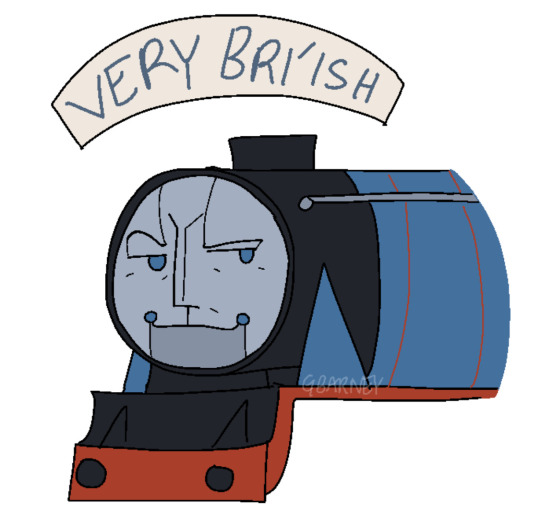
GORDON GANG RISE UP 🗣️🗣️🗣️🗣️🗣️🗣️🗣️
#daryl draws#ttte#thomas the tank engine#great british blorbo off#ttte gordon#gordon sweep 2k23#gordon the big engine#WE CAN DO THIS GORDON GAAAANNNGGGG‼️‼️‼️‼️‼️‼️#i’ll make one for thomas if He gets into the semi-finals and not Gordon#SO FOR NOW GORDON SWEEEEEEEEEEPPPPPP
239 notes
·
View notes
Text



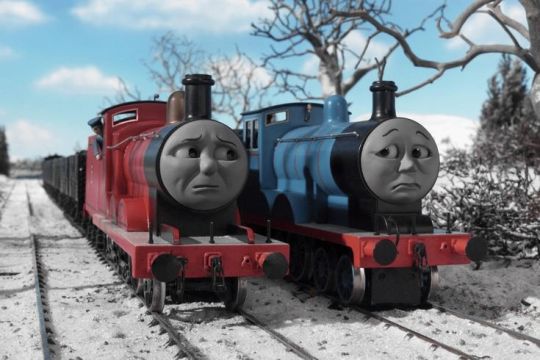
Sorry I had artblock but Decided to draw James and Edward because I love drawing them two and they're both my favorite characters <33
Theyre good best friends....yeah...They're friendsss....
(Also, I might only draw them humans since I can barely draw trains yet 💔)
#ttte human au#thomas and friends#thomas the tank engine#james the red engine#edward the blue engine#idk lol#Holyyyy molyyy#James is mexican in my headcanon btw-#Edward is British obviously lol#i love them so much#They smooch...cuz they're friends#Yeah they're friends#They're very close...#Holding them cherishly#James and Edward forever <3#art#Business Mango#Exploding#RAGHHHH#gijinka
77 notes
·
View notes
Text
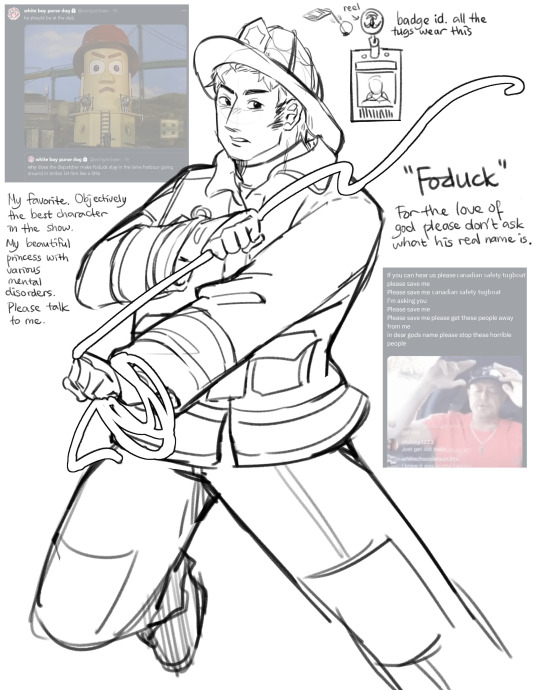
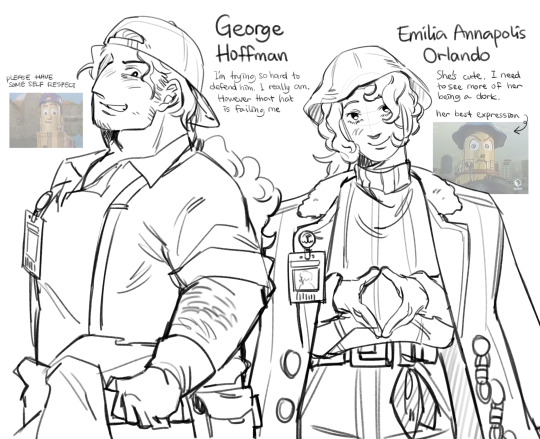
special thanks to these pez dispensers for accompanying me during my stay at the hospital. glory to canada
#theodore tugboat#theotug foduck#theotug george#theotug emily#stanza halifax#<--- don't expect this to be a big AU in this blog because TUGS is the main focus regarding boats. I just wanna draw gijinkas#senjart#sorry for not answering the asks guys. I got admitted into a hospital since tuesday and just got released yesterday (laugh track)#anyways about the show. theodore tugboat am I right#like I've said before it doesn't hit me as hard as thomas or TUGS#like it's not as character heavy as ttte#or as worldbuilding heavy as TUGS#but it's like.... a really fun relaxing show. super good even#I'd usually roll my eyes at overly nice protagonists but theodore is an exception. he is my friend. my pal#maybe it's just my affinity for shows with talking vehicles but erm.... robert cardonna you've done it again#the show doesn't have big explosions or bombastic events unfolding#the episodes have this very quiet and soft narration by danny doherty. no loud sounds or weird wacky silly sound effects in a bwba fashion#also everyone is nice to each other in this show which surprised me lol#because I've grown accustomed to the british-style verbal battles between sudrian engines#and the typical blink-and-you-miss-it dark comedy quips from top hat and zorran#theodore tugboat: what a peaceful day at halifax :) we talked about our problems properly and learned more about the world#TUGS: what a peaceful day at vaguely san francisco :) only 2 trampers died instead of the usual 5#I recommend it if you want a show that's easy to digest and easy on the eyes/brain#some episodes have characters that should've been switched to make it make sense#like harbour fools or even bumper buddies#I eventually got used to it#and there's not much worldbuilding going on. not my hugest complaint since it's still a cute show#there are also a few inconsistencies here and there... not to mention the episode order that kind of confused me#the side characters haven't grown much on me but I guess it just doesn't hit me YET#it's still good. I'll give it an 8/10
151 notes
·
View notes
Text

Had no idea there were that many members of the royal family
86 notes
·
View notes
Text

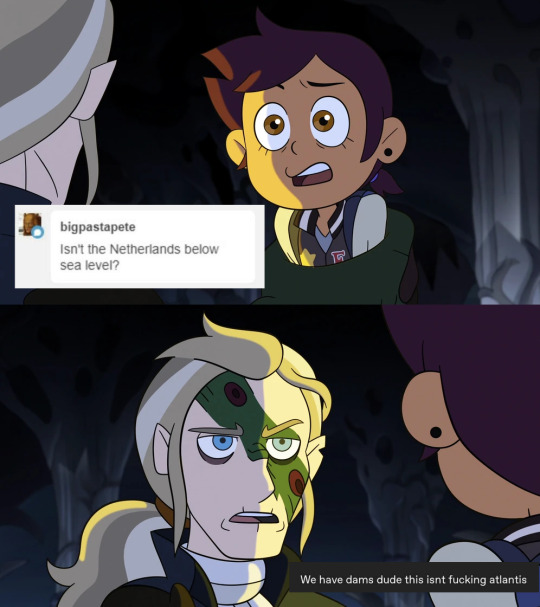

#love the headcanon that he never learned how to swim due to the swimming Witch test#and this ALSO fits since Philip could be Dutch rather than British if the Brothers Wittebane truly arrived to Gravesfield in 1613#never underestimate the power of Dutch engineering#the owl house#toh#textpost memes#philip wittebane#luz noceda
210 notes
·
View notes
Text

i was listening to the dark river audiobook and he sounded a bit too texan, so now all i think is this little texan cat
#warrior cats#brackenfur#wc#wc designs#and yes i do imagine him sounding like the engineer from tf2#idc that they’re all supposed to be British he’ll always be texan in my heart#little meow meow#warrior cats fanart#i promise im working on more tf2 stuff im just mostly art blocked rn!!!!!#deltapelagicpetrel
475 notes
·
View notes
Text
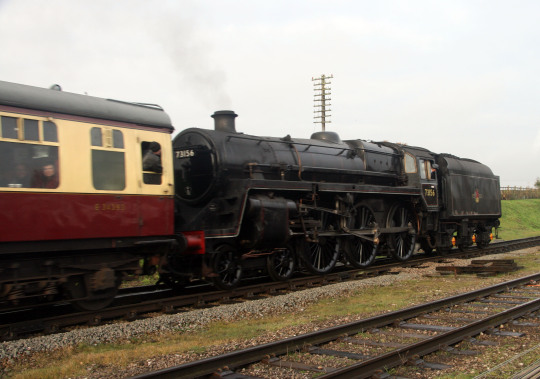
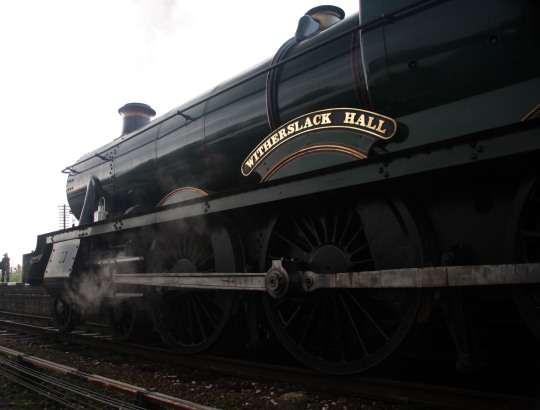







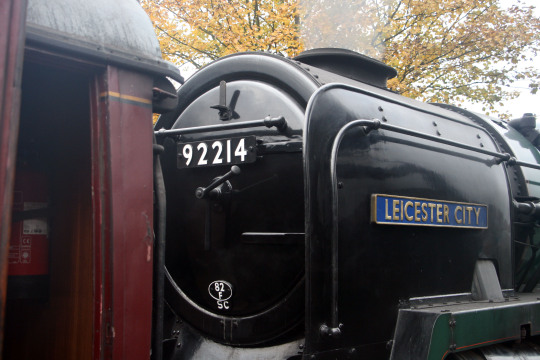
Great Central Railway, Last Hurrah Gala 2019 (Part 1)
#steam locomotive#england#winter#photography#steam engine#steam train#train#engine#locomotive#Great central railway#GCR#LMS#LNER#british railways#smoke#steam#photograph
86 notes
·
View notes
Text

The first turbojet. approximately April 1937.
VIDEO ➤➤ https://youtu.be/vNhz46CjN0A
#youtube#aircraft#airplane#aviation#dronescapes#military#documentary#aviation history#turbojet#jet engine#sir frank whittle#frank whittle#hans von ohain#Von Ohain#britain#British#invention#Inventor
102 notes
·
View notes
Text




Jaguar XKE Series 1 Roadster, 1966. The American version of the E-Type, using a 4.2 litre version of the XK DOHC straight 6 that also powered the XJ Jaguar from 1968. The car is on loan to Transport World in Invercargill, New Zealand
#Jaguar#Jaguar XKE#Jaguar E-Type#1966#1960s#convertible#Roadster#US market#XK engine#DOHC#Series 1#straight 6#British Sports Car
223 notes
·
View notes
Text
How Did the Big 4 Affect Ideas About Scrap for the Steam Engines:
Alright, so in the Railway Series, we know that scrap and the idea of scrap is horrifying to the engines. But the real question is: was this a universal thing? Were all the engines equally horrified, or were there differences.
I mean, from that one infamous illustration in the Railway Series, it seems pretty universal...

But I think that if we dive a little deeper, there may be a few other factors at play, which collectively create very different views on scrap - and they all have to do with the Big 4. I'm going to explain them by size, so let's start giant and get smaller.
LMS:
The LMS engines would not be as surprised to hear they're being replaced and scrapped as other companies. Why? Well, we have to look back a bit. In the 1920's, the LMS was a bit of a hodgepodge of constituent railways and their engines. The Midland 'small-engine' policy did mean that a lot of the bigger engines were frowned upon, but in general the engines were just... there.

This changed with Stanier. When Stanier came along, he began building larger, faster, more powerful engines - and thus a lot of the older, smaller classes were axed. Engines classes like the Black Fives, Coronations and 8F's could do the work of these older engines much better!

There was only one class of engine built by the Furness that survived into BR ownership, and they weren't the only company with this happening. The engines of the LMS would've been accustomed to these ideas. And where does D261 come from? Well, the Class 40 diesels were used on the West Coast Mainline - D261 would be very used to the steam engines being very accepting of the idea that this was 'their time', and therefore stunned at how the Sodor engines acted.
The opposite end of this was that smaller engine classes were very afraid of being withdrawn. Edward's a great example of this - he watched his entire railway be taken over and all his friends and family replaced - and he fears he might be next. It drives him to extreme lengths to prove his worth, just to try and gain a few more years. Donald and Douglas are another example of this; as Caledonian Railway engines, they were generally under the threat of being scrapped all through their careers, and this created a desire to prove themselves and survive.
The LMS as a company committed to this 'purge' of smaller, older classes, and thus the engines of the LMS would have been far more used to and accepting of the idea of being scrapped as compared to others. It was part of the company culture! It wasn't universal by any means, but it had an impact, especially in the English part of the LMS.
LNER:
The exact opposite of the LMS. The LNER was a railway that was throughout its existence very, very poor. And while it did build some stunning-looking express engines...
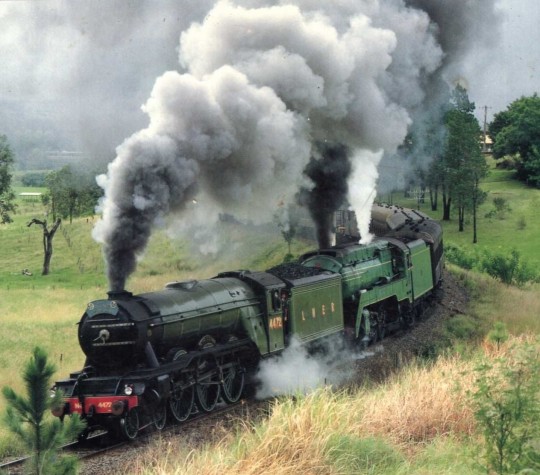
... in actuality, many of the engines running on the LNER were constituent engines that were just kept going. A good example of this would be the C1 Atlantics, which were introduced in 1902, and weren't completely withdrawn until 1950!

The LNER just didn't have the money or the ability to commit to a drastic newbuild scheme like the LMS did. That isn't to say that old engines weren't scrapped, but it did mean a lot more of the older classes weren't. And when a large body of engines survive for 50 odd years, the culture of elongated existence survives with them. Gordon is so badly affected by the Modernisation Plan personally because his company culture was one of preservation and extended service. His brothers would have quite happily told him that even when they were supplanted by the A4's that they'd be around for a long time yet, because that's how the LNER worked. And then they weren't and Gordon was stunned.
And remember, the LNER is the railway that preserved City of Truro alongside a bunch of its elderly engines at York. This railway had a culture that was built around a sort of trickle-down duties. As express engines were supplanted, they simply moved down the chain.
Speaking of City of Truro...
GWR:
This is another railway whose engines are stunned by the Modernisation Plan, but for a very different reason. Both the GWR and the LMS scrapped a large number of engines in the 1930's, but unlike the LMS, the GWR focused on engines who were at the end of their useful lifespan.
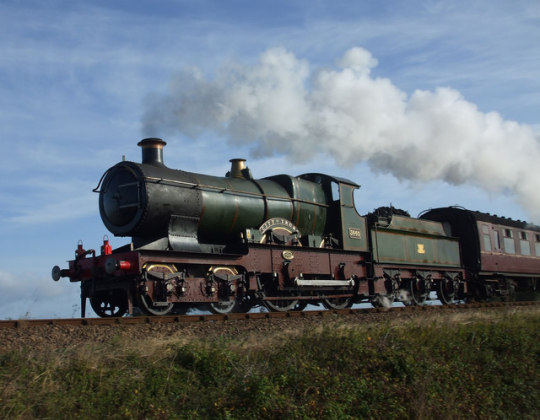
City of Truro was around 30 when withdrawn. For an engine introduced at the same time as the C1 Atlantics, this seems short - but its about average for the GWR at the time. The shock to the GWR engines is not the fact they're being scrapped - it's the fact that engines not at the end of their useful lifespans are being scrapped.
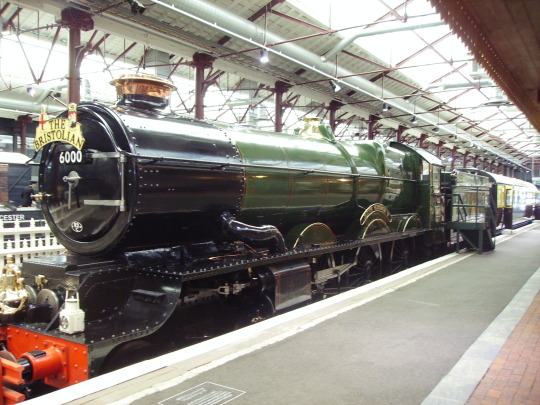
The King class was built in 1927 and nearing the end of their lifespan, but the Modified Halls weren't, and neither were the 9400's. Their withdrawal and subsequent scrapping was what really shocked Western engines.
Oliver's class was built in the 1930's, and would have expected to survive into the late 1960's and 1970's. The sudden withdrawal of them all would have been a great shock, and one of the driving factors behind his escape.
And then in the Railway Series, Duck doesn't act all that surprised to hear steam engines are being cut up - but he is hostile to diesel engines. The reason? Because diesel engines aren't just replacing the old engines in the natural GWR order of things, but supplanting the entire lot. He's relatively fine with Bear though because unlike many of the other diesels, Bear's class could be very easily perceived as being a natural progression of GWR engines. They took over the jobs of Castles and Kings - engines built in the 1920's and nearing the end of their GWR lives. There is of course also his outburst, which gives off a very GWR vibe - telling an engine off for insulting another railway? I wonder which of our Famous Eight has also done that...
Southern:
Right, so the Southern is possibly the most interesting case of them all. And the reason for that is this:
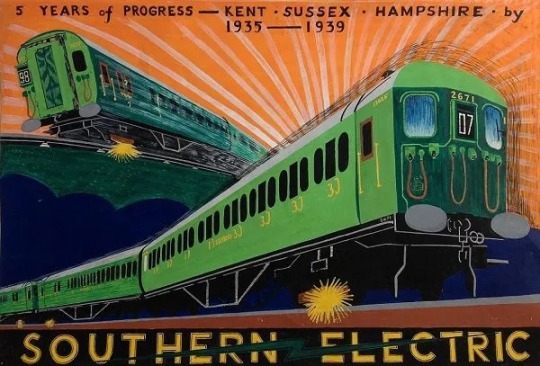
The Southern Railway was both the smallest of the Big 4 and the most passenger orientated. As such, they naturally gravitated towards a program of electrification, which they saw as the best way to maximise their profits. Engines on the Southern would have been invariably told that they would be withdrawn someday when the electrification reached their part of the line. That is a level of certainty that would have a massive impact on how the engines viewed their fate.
It also meant that the Southern Railway was not focused on replacing the steam engines they already had with new ones. This allowed some truly ancient engines to make it to British Railways.

This is Fenchurch, and when withdrawn in 1963 he was the oldest engine working on British Rail. He was built in 1872 - so that's a career of 91 years. And another class that was hitting pensioner years in British Rail was the Adams Radial Class, built in 1882. Both Southern Railway engines that found a niche duty that wasn't going to be electrified or upgraded anytime soon.
Even the E2's had their own niche at Southampton docks! They were a failure of a class when built, and yet were still in service in the 1960's. Thomas the tank engine himself has remarkably little to say about modernisation in the books - his job is threatened by a diesel, and while he's horrified that it's a diesel, he's not shocked he's being replaced. Even though he spent a tiny amount of time in the south, its culture managed to penetrate his smokebox.
But there is one other railway that has a central role in this, and it is of course British Railways.
British Railways:
Right, so this is the one company that is the cause of much of the above commentary to become obsolete. When amalgamated, British Rail was meant to electrify the country's railways slowly and steadily, with steam engines making up the difference. And at the onset, they withdrew and scrapped many of the older, smaller classes of engines and replaced them with the Standards - something very similar to LMS and GWR practice, and also not unfamiliar to the LNER. The really problem comes with the Modernisation Plan in 1955.
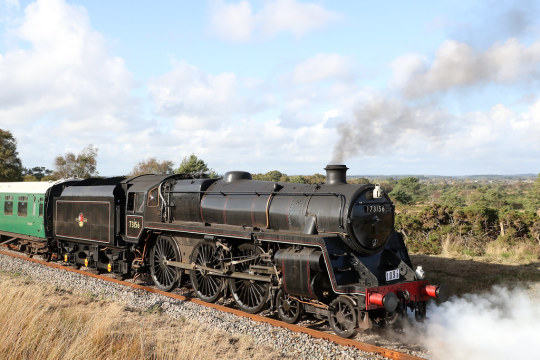
The Standard Five class were built until 1957 - two years after the publication of the Modernisation Plan which explicitly stated that BR would scrap all steam. The 9F's were being built until 1960. At the longest, these engines got less than twenty years. At the youngest, some were withdrawn after only five years.
And that's what shocked all the older engines. It's not the fact they're being scrapped - ever since the conception of the railways, engines have been being scrapped. It's the magnitude of the scrapping and the wanton destruction of young, healthy engines. It's not that they're being replaced - that was always going to happen, all the engines knew that. It's the speed of the Modernisation Plan, the scrapping of brand new engines and the fact that steam engines were replaced with Pilot scheme diesels who were mostly failures.
That's what caused the engines to fear scrap and hate diesels.
And while I would love to delve into the diesels and what happened to them, that's its own massive thing.
I would like to note that this does not really take into account specific incidents, but rather general trends that would have led to more widespread knowledge. The single incident involving one engine in Aberdeen doesn't really permeate railway gossip and ideology, but an entire class being withdrawn does.
I would also like to acknowledge the fact none of the above pictures are mine.
#ttte edward#ttte gordon#ttte donald#ttte douglas#ttte oliver#ttte duck#lner#LMS#gwr#southern railway#british rail#long reads#weirdo shit#I thought I'd share this brainfart#thomas the tank engine#railway series#railways#britain
148 notes
·
View notes
Text
This Shouldn't Be as Relatable as It Is
"With the bogey of Sunday rates of pay, the LMS Northern Division ran those Sunday services on a veritable shoestring. Only Glasgow Central station was used, and one locomotive depot, Polmadie. Signal boxes were switched out wherever possible. From Paisley to Kilwinning, there was no box open except Glengarnock No 2, which was kept open for the ironworks. Staffs at stations were the minimum.
In June 1927 the LMS took a really daring decision, advertising a Sunday Excursion from Glasgow to Portpatrick on 18 June from Central station. The G&SW men had been complaining that they were getting no share of the Sunday jobs, so authority said to Corkerhill, 'Here you are. Run this excursion to Portpatrick. Put on two of the heaviest engines which are permitted, and give the job to your two senior passenger men.' So Corkerhill chose two big-boilered Manson 4-4-0s, Nos 14374 (ex-346, ex-157) and 14261 (ex-389, ex-259), of the 18 and 240 classes respectively. They gave them to the two oldest drivers, Sanny Rowan and Dick Gaw, who had been leading a quiet life on the 'old men's jobs'. They did not know the road into Central, but they were told to proceed to West Street and they would get a conductor from there. So they set off from Corkerhill tender-first, and with a big of juggling got to West Street. No conductor there. 'Go on. He's at Larkfield,' said the signalman, 'It's not far.' So they got down to Larkfield, and of course landed in Central nose first! They had to come back out to Eglintgon Street to turn. They got back in to find a train of eleven corridors and a Pullman diner, Helen Macgregor, 366 tons tare and filling rapidly.
They got away eight minutes late and sat for 15 minutes at Paisley waiting on the Largs train clearing Glengarnock. By the time the train left Paisley it was estimated that there were 950 passengers aboard. They called at Irvine, Troon and Prestwick, with a draw-up at each to let all the train get to the platforms. At Ayr, both engines took water. By this time the train was packed. There was an extra stop to pick up a party from Kilkerran. At Girvan both locomotives took water again. Webster was guard and he came forward at Girvan grumbling about the delay. Dick Gaw, flourishing his oil can, chased him up the platform, threatening to knock the bluidy heid off him.
Now came the problem. The scheduled top load for each of those engines, Girvan to Pinmore, was 140 tons, and they had 366! No assistance was available. How they got up, I shall never know. I think the regulators must have been twice round. Stop at Pinmore — another party to lift — missed the tablet at New Luce and had to stop and run back for it, arriving 80 minutes late Stranraer. They then took the whole train down to Portpatrick, rounded it (on a loop which held, I think, eight coaches) and hauled the whole lot back up to Stranraer, tender-first. At Stranraer there was no one on duty except a signalman. They had to turn, water and coal both engines; two big fires to clean. Then they had to turn to and fill finer tanks and lavatory tanks, and by buckets, for the hoses were either locked up or could not be found. Then back down to Portpatrick, with a 40-minute late start on the return journey. They had a special stop at Dunragit, parties at Pinmore and Kilkerran, and had double stops at all stations except Ayr, finally arriving 148 minutes late in Glasgow Central. The engine crews booked off at Corkerhill after eighteen hours on duty!
'Splendid!' said Head Office, examining the passenger returns on Monday morning, and it promptly arranged for another similar excursion [next] Sunday."
p. 31-33, Legends of the Glasgow & South Western (David L. Smith)
#elder abuse for fun and profit#real true railway stuff#british engines#scottish engines#glasgow and south western engines#david l. smith#when this man can follow the thread of his own damn stories for longer than a paragraph the results are invariably great
39 notes
·
View notes
Text

Churchill AVRE laying carpet from bobbin, 79th Armoured Division equipment trials, 26 April 1944
20 notes
·
View notes
Text
Wow look at the time!

#2/2#ttte#ttte edward#edward the blue engine#i did it i celebrated the holiday#thats a good engine#the railway series#i love him so much i could scream and end us all#thomas and friends#i wish trains were real#i love picturing him singing funky little british songs#Spotify#edward day
304 notes
·
View notes
Text
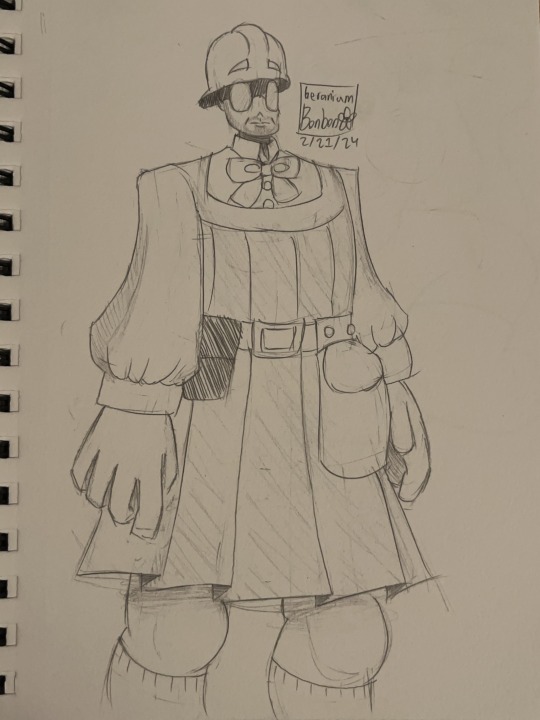
gymslip engie. that is all
#tf2#team fortress 2#tf2 engineer#engineer tf2#op#my art#original post#original art#tf2 fanart#fanart#art#sketchbook#gymslip#british school uniform
22 notes
·
View notes
Text



the only green flag i've ever made
#idk i just love a good farm boy with a british accent#lucien.*#ts4#he's 6'5#and was raised on a farm#majoring in sustainable engineering#so he can help his family#hes the oldest of like 6 kids#and he goes to oxford. so#oh also bro is hung#he'll fuck u good#gamma saga#the sims 4#the sims#sims#sims 4#cas#cas screenshots#cas screenies#my sims#my sim#my ocs#my oc#simblr#my simblr#the sims community#sims community#ts4 cas#ts4 simblr#band au
24 notes
·
View notes